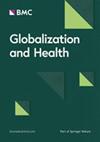An analysis of flavor descriptors on tobacco products in the Philippines: Regulatory implications and lessons for low- and middle-income countries
IF 4.5
2区 医学
Q1 PUBLIC, ENVIRONMENTAL & OCCUPATIONAL HEALTH
引用次数: 0
Abstract
Historically, tobacco companies have used flavored tobacco products to enhance the appeal of tobacco consumption, encourage initiation and experimentation of tobacco use, and contribute to sustained tobacco use. While flavored tobacco products are regulated in several countries, there is no existing regulation on flavored tobacco products in the Philippines, specifically for cigarettes and cigars. This study aims to update evidence on the flavored tobacco product landscape in the Philippines by assessing both the flavor descriptors and flavor imagery featured on cigarette and cigar packaging. We collected 106 cigarette and cigar products from four major cities in the National Capital Region, Balanced Luzon, Visayas, and Mindanao. Of these 106 cigarette and cigar products, 62 (58.49%) had flavor descriptors. Three crushable capsule products did not feature any flavor descriptor but were included for flavor imagery examination. We identified five categories of flavor descriptors: menthol, concept descriptors, tobacco, beverages, and other flavors. Out of 62 packs, ten featured more than one flavor descriptor on the packaging. Menthol flavor descriptors comprised the majority of flavor descriptors. Imagery and other graphic elements closely resonate with and enhance the flavor descriptors found on these packs. This study aimed to update the evidence on the flavored tobacco product landscape in the Philippines and address their absence of regulation. Regulating flavored tobacco products requires a comprehensive policy approach complemented by complete enforcement. Flavor substances, flavor descriptors, and flavor imagery must be regulated altogether; however, it is ideal to enforce a ban on flavored tobacco products in compliance with the WHO FCTC, to which the Philippines is a signatory. Policymakers should consider plain packaging as an intervention to eliminate the appeals associated with flavored tobacco products.菲律宾烟草产品口味描述分析:对中低收入国家的监管影响和经验教训
从历史上看,烟草公司利用调味烟草制品来增强烟草消费的吸引力,鼓励开始和尝试使用烟草,并促进持续使用烟草。虽然一些国家对调味烟草制品进行了监管,但菲律宾目前还没有对调味烟草制品,特别是卷烟和雪茄烟进行监管。本研究旨在通过评估卷烟和雪茄包装上的香精描述和香精图像,更新菲律宾香精烟草产品情况的证据。我们从国家首都区、平衡吕宋岛、米沙鄢群岛和棉兰老岛的四个主要城市收集了 106 种卷烟和雪茄产品。在这 106 种卷烟和雪茄产品中,有 62 种(58.49%)有口味描述。有三种可压碎胶囊产品没有任何香味描述符,但也包括在内进行香味图像检查。我们确定了五类风味描述符:薄荷、概念描述符、烟草、饮料和其他风味。在 62 个包装中,有 10 个包装上有一种以上的口味描述符。薄荷口味描述符占口味描述符的大多数。图像和其他图形元素与这些包装上的风味描述符产生了紧密的共鸣,并增强了风味描述符的效果。本研究旨在更新菲律宾风味烟草制品现状的证据,并解决其缺乏监管的问题。对香料烟草制品进行监管需要全面的政策方法,并辅以彻底的执法。必须对香料物质、香料描述符和香料图像进行全面监管;然而,最理想的做法是按照世卫组织《烟草控制框架公约》(菲律宾是该公约的签署国)的规定禁止香料烟草制品。政策制定者应考虑将普通包装作为一种干预措施,以消除与调味烟草制品相关的吸引力。
本文章由计算机程序翻译,如有差异,请以英文原文为准。
求助全文
约1分钟内获得全文
求助全文
来源期刊

Globalization and Health
PUBLIC, ENVIRONMENTAL & OCCUPATIONAL HEALTH-
CiteScore
18.40
自引率
1.90%
发文量
93
期刊介绍:
"Globalization and Health" is a pioneering transdisciplinary journal dedicated to situating public health and well-being within the dynamic forces of global development. The journal is committed to publishing high-quality, original research that explores the impact of globalization processes on global public health. This includes examining how globalization influences health systems and the social, economic, commercial, and political determinants of health.
The journal welcomes contributions from various disciplines, including policy, health systems, political economy, international relations, and community perspectives. While single-country studies are accepted, they must emphasize global/globalization mechanisms and their relevance to global-level policy discourse and decision-making.
 求助内容:
求助内容: 应助结果提醒方式:
应助结果提醒方式:


